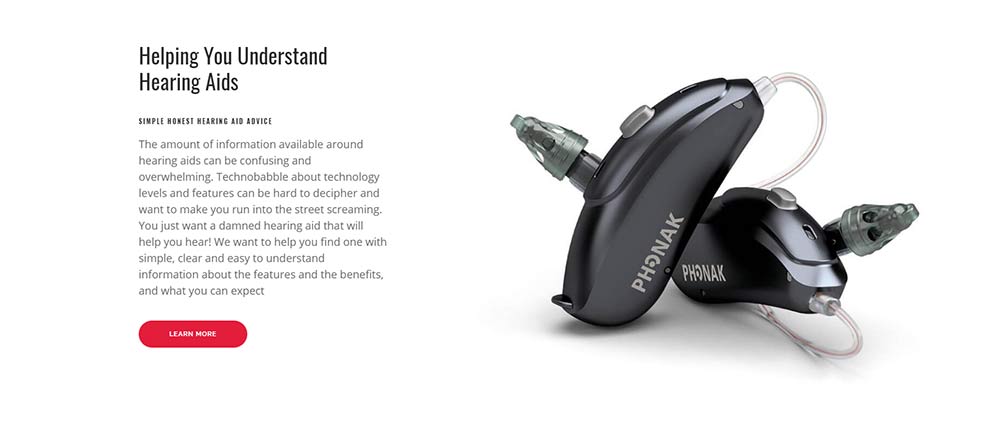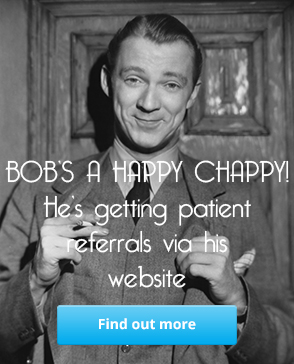Redesigning a Beast of a Website to Ensure User Satisfaction
-
By Geoffrey Cooling on 2nd March 2018

What To Do? Not Just Aesthetic Needs, But Technical Needs as Well
So with our outline strategy in mind, it was to action. The first thing we needed to do was redesign the website and update the technology that underpinned it. While much of the redesign appears to be aesthetic in nature, there was also work undertaken to make it mobile friendly and easier to use.
Mobile Friendly
Google has made it clear that they see the mobile search returns as the future of search. It makes some sense when you consider the number of searches that are undertaken on mobile devices. Mobile devices consist of more than just mobile phones, they also consist of a myriad of tablets.
Google has made it clear over the last few years that if your site does not offer a good mobile experience, your rankings will suffer. Being mobile friendly is a mixture of both physical design and technical design. In the past, the strategy would have been to design two different websites, one for desktop, and one for mobile.
With the advent of the modern web and web design, that has changed. We all now design responsive websites, which simply means that the layouts are responsive to the device that is viewing it.
Responsive May Not be Enough
In some cases though, responsive may not be enough, just designing a responsive element does not mean that it will deliver a good mobile experience to the user. When we come across cases such as these, we design two types of elements for the same thing, one that is hidden on the desktop and viewable on mobile and another that appears on the desktop and is hidden on mobile.
This type of designing ensures that you are designing for the mobile experience and experience is important. If a user clicks through to the page from a search return on their phone and then hates it, they click back. That will cost you the next time the keywords are searched.
Lesson 1: Make Sure Your Site Offers a Good Mobile Experience
Prettier, Faster, Easier to Use
Basically, we completely redesigned the site to make it prettier, faster and easier to use. The physical design work is in fact, relatively easy. The technical backend work to make it faster and lighter is a little harder. We also began to introduce the latest thought in technical SEO and on-page SEO. For instance, we began experimenting with schema.org markup and later with something called JSON-ld. These are technical SEO elements and we have found that they appear to work very well for us.
JSON and Schema are quite technical in nature, however, our experience has shown that they are worth it. It took us a bit of time to get our head around it, but it is now second nature and we have incorporated much of it into our templates. So we have automated it to a certain extent, especially on blog posts. This type of technical SEO allows search engines to implicitly understand what your content is about, it has other benefits as well. For instance, the pretty stars that you see sometimes in search results like this:

Lesson 2: Technical SEO Pays Real Dividends
Making it pretty also matters, people are more likely to stay on a site that is pretty, ordered and easy to consume. It is important to also consider user's reading habits. On many pages, we offer a snapshot of the information which leads to a deeper page which gives long-form content. This allows mobile users to get quick references and understand that there are deeper fuller explanations onsite. In all, the look of a website drives trust and authority.
Lesson 3: Your Site Should Represent Your Brand, Pretty is Better and Time Spent on SEO is Worth Every Precious Second
Changing The Persona
Another important decision we would undertake was to focus on the persona of our copy. You need to do this as well. We could have gone one of two ways, we could have been highly professional and technical in nature or we could stick with relaxed, informative and sometimes a little hinky. Anyone who knows me will immediately guess what won there.
All joking aside, this is an important consideration, too technical and you lose the consumer, too jokey and you lose the professional edge. We decided pretty much in the middle. In our writing, we try to decipher the technical, advise the consumer while being relatively relaxed. We also decided that we would be straight to the point while not allowing consumers to hide from themselves.
People with hearing loss hide from themselves, we all know it. While we are in Practice it can be a little difficult to deal with. While I am writing copy, it is easy for me to confront it and it serves the ends of the consumer to do so. Some of our most successful copy has been challenging in nature. We believe that the persona we have adopted has allowed us to connect with the consumer and gain trust.
Of course, the information we supply and the breadth of the content also drive both trust and authority. Everything we did in relation to design, copy and persona was undertaken with that in mind. We haven't shirked away from the tough stuff, you shouldn't either. Some of the hearing aid brands have been irked by our coverage of their problems, my answer to them would be tough.
The best way to deal with a problem is to make everyone aware of it as soon as possible, tell them you are sorry and make sure there is a fix on the way. If it is the case that the problem is as much a third party issue, as is the case with most Bluetooth problems, tell them that. Don't hide behind a wall of silence, or worse, a statement of, "we haven't had many reports of that". Rant over for the minute.
Lesson 4: Find your voice, Don't Be Afraid To be a Little Confrontational
Widening The Context
We decided that in order for our site to become a global behemoth, yes right, like we thought it would hahahahah, that we needed to widen the context of the site. In order to do that, we needed to begin to cover the entire world of hearing loss and hearing devices in a deeper manner.
You really never know what the prospective consumer is interested in. So the best idea is to talk about everything. So that is what we have done, basically, we try to cover all facets of hearing loss, hearing care and assistive devices. The point here though is that you do it in a constructive way.
Lesson 5: Write About The Entire Gamut of Topics Surrounding Hearing Loss and Hearing Care
Cornerstone Content
We use cornerstone content on Hearing Aid Know, then we write articles that internally link to and support that cornerstone content. You should be doing this too. For an example of cornerstone content on the Know site, you can view a definitive page for Bluetooth hearing aids here and a cornerstone review of rechargeable hearing aids here.
We support those pages with articles about new rechargeable hearing aids and Bluetooth enabled hearing aids as they appear using internal hyperlinks to feed back to them and support them. We also constantly update the cornerstone pages with the new additions as they happen. You should be doing this as well.
Lesson 6: Put Cornerstone Content on Your Site, Support Them with Articles and Consistently Update Them
Introducing New Sections
As part of the redesign, we wanted to introduce entire new sections about Independent professionals and what the consumer should expect from them. From that idea, the idea for a group of trusted Independent professionals began to grow. We outlined the section to include a clinic finder and profile for each Practice.
Initially, we saw it as a way to support our website customers, but it has grown from there. As we have become trusted by consumers, so Independent Practices see the benefits of having a profile on Know. It has become a slowly building network of people we trust to do the right thing. We designed the profiles carefully in order that they would detail the services, focus on local search and drive trust. They have been relatively successful in local search results.
Lesson 7: Set up Localised, Focused Pages on Your Website For Each and Every Practice or Clinic
Our readers like the idea and we hope that we can build it into the gold standard globally. I will talk about these sections in more detail in a later article and explain what we have done, why and how it is working.
I think that is enough for now, heed these seven lessons, they will make a huge difference to you and your website. That will have a knock-on effect on your business levels.


